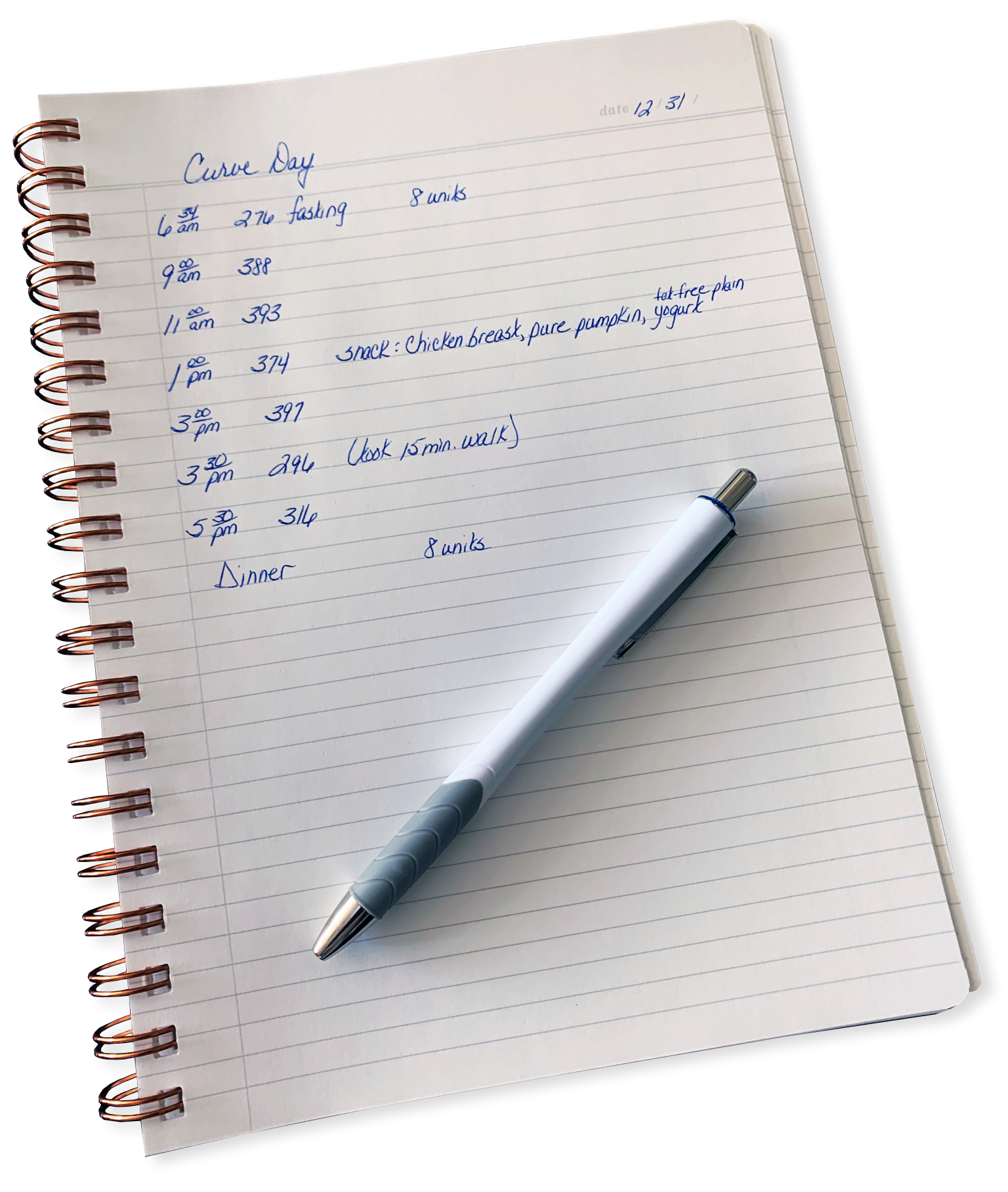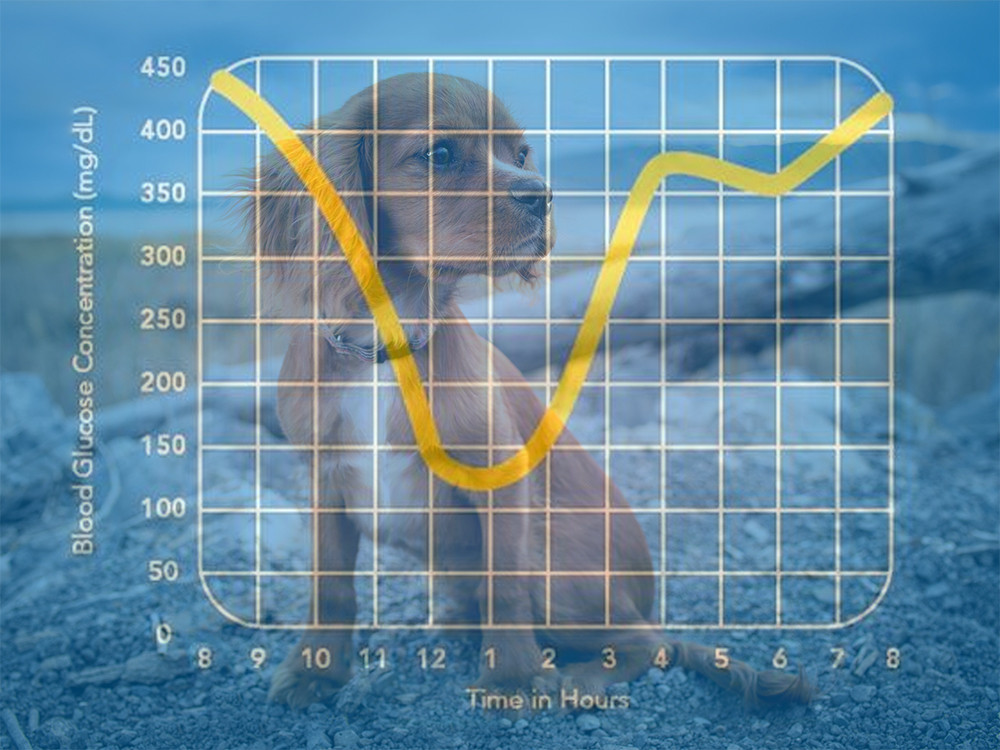How To Do a Curve on My Diabetic Dog (And Why)
We curve our pups to see how insulin and food are working together. In the very beginning, you will curve a fair amount (as much as once a week) until you get close to your perfect dose. All of our pups should be started on a conservative starting dose of insulin and SLOWLY increased from there. Food and insulin must work together like a well-choreographed dance.

How to Curve:
Begin with AM fasting (that’s the reading before breakfast), and test every two hours until PM fasting (the reading before dinner).
For example:
7 AM, 9 AM, 11 AM, 1 PM, 3 PM, 5 PM & 7 PM.
For your first couple curves, you may want to not exercise or give treats so that you have a clear picture of how food and insulin are working together. After those first curves, you may choose to curve on a day with normal activity and treats to see how food and insulin are working on a typical day with walks and treats. I chose to always curve on days that were normal activity. That way, I knew what activities had what effect on my Max. I kept meticulous notes most days, but on curve days (especially in the beginning), my notes were a little over the top. Shocking, I know! lol
Why do we curve?
We curve to see what our pups curve shape is. Is it a bowl curve (fasting numbers in the 12 hour period are the highest), is it a mountain curve (fasting numbers are the lowest in the 12 hour period), or is it flat (not much variance throughout the 12 hours). Knowing the shape of your pups curve will give you tremendous insight into managing this disease.
If you have a bowl curve and you work outside the home, you will want to know this. Particularly because your fasting readings are the highest readings of the day. You want to be sure that your pup is safe while you are at work. I work from home, but I know that is a luxury that not everyone has, so this information is key for you!
If you have a mountain curve and you work outside the home, you will have some wiggle room because your fasting readings are the lowest readings in between your insulin shots. If you have a mountain curve and you are home all day, there are ways to flatten that curve out which we will discuss in a later entry.
Now some of you will say that “My dog is broken… his numbers are all within 100 points of each other.” Nope, your dog isn’t broken; you have a flat “curve”. What does this tell you? It tells you that your food and insulin are working very well together! There is one exception and that will be addressed in a later post. If your numbers are high and your curve is flat, you may be giving too much insulin. But typically, if your pup is in a good range and you have seen appropriate reduction in BG (blood glucose) numbers with increases in insulin, then not to worry!
And don’t be fooled, just because you have a bowl curve today, that doesn’t mean that you will always have a bowl shaped curve. This is another reason that testing is so important, curve shapes can change with many factors or just because the wind has changed direction. This is a dynamic disease, it is not “set it and forget it”!
We base any change in dose on the LOWEST number in any curve. We do NOT chase the high numbers. When you lower high numbers, you also lower the low numbers. We want our pups to be safe at ALL times.
One unit of insulin can lower numbers by up to 100 points and a half unit increase can lower numbers by 50 points. Making an adjustment without the full 12 hour picture is not recommended. Safety first and slow and steady will win this race! It’s worth noting here that for small and medium dogs, it is recommended to increase by half a unit each time so that you don’t miss your “sweet spot”. For large dogs, a full unit increase will likely be warranted in the beginning, but once you are fine tuning your dose, half units are the way to go in my opinion. Also keep in mind that a new dose can take up to 3 days before you begin to see it work, hence the once a week curve in the beginning. We need to let a dose “settle” before changing it again.
I’m not playing vet here, my role is to give you as much information as I can to help you work with your vet to manage this disease well. I didn’t have the luxury of a vet that understood this disease and the day to day management of it, so I took it upon myself to learn all that I could to help my Max. Please know that your vet has to learn many pathologies for many species and likely doesn’t have the opportunity to become a specialist in any one of those. I do hope that your vet is open to learning along with you about the nuances of this disease or trusting that you are doing your research for both of you!

